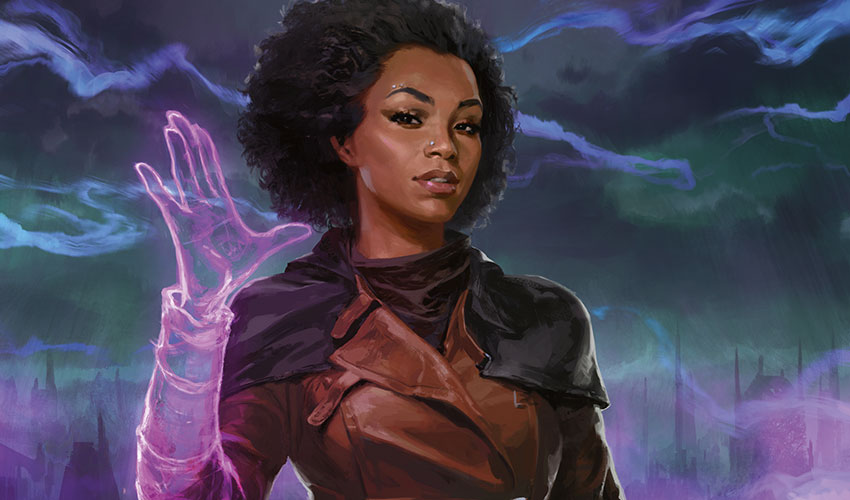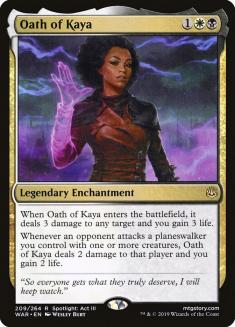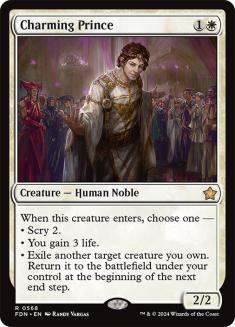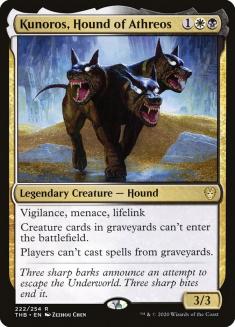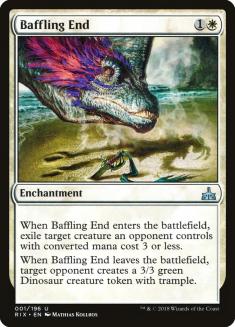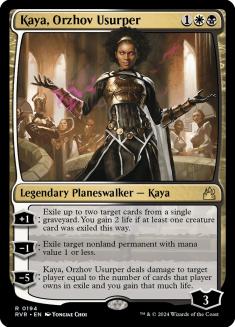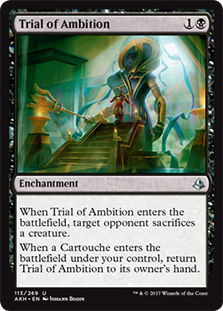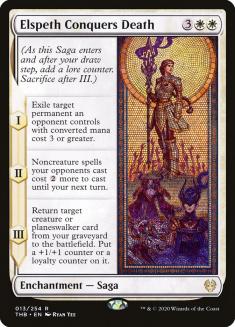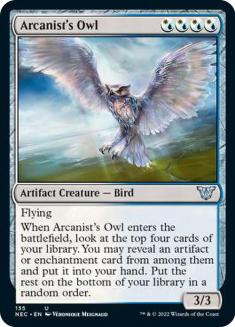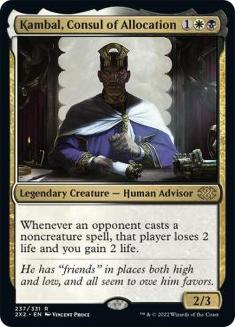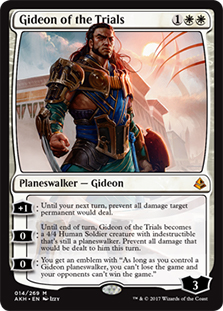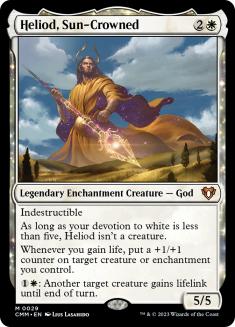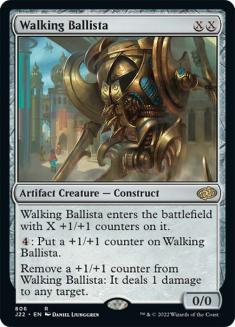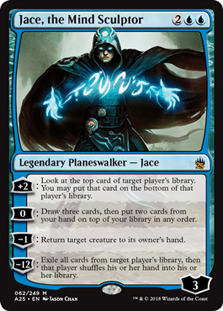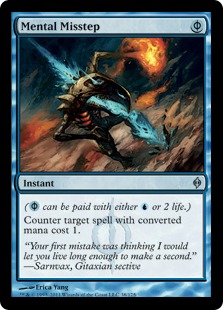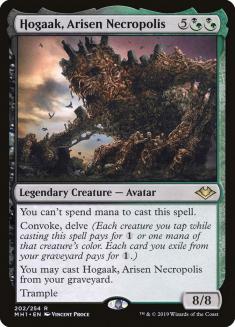It would appear that the companion mechanic has essentially taken over every single Constructed format for the time being. Of course, two of the ten are significantly better than the other eight — Lurrus of the Dream-Den and Yorion, Sky Nomad — and comprise the vast majority of competitive archetypes right now.
Until they are banned, Lurrus and Yorion will dominate competitive Constructed, and there’s little point in playing anything else. Both of these cards are far above the curve in a variety of aspects. Primarily, their restrictions on deckbuilding are just not strict enough to truly compensate for their power.
After all, so many strong cards are so cheap now that it’s no trouble at all to restrict yourself to permanents with converted mana cost two or less. Some might say that it’s a secret bonus of Lurrus, forcing you to make better deckbuilding decisions by eliminating the possibility of clunky threats. It’s incentivizing good decisions! One could save so much time in coaching new deckbuilders in fundamentals and where to make cuts by just printing cards that force them to follow good heuristics. Imagine Wizards of the Coast (WotC) sending out the following message:
That’s essentially what Lurrus does, humorously enough.
And for Yorion, its restriction is odd, to say the least. However, a restriction to play 80-card decks, while unusual and certainly not beneficial in the abstract, is not a tremendous restriction at all when there are so many strong cards being printed nowadays. It’s easier than ever to find enough high-quality spells to fill out a deck, whereas years ago you would end up scrapping around for subpar spells in order to cobble together 80.
But the other benefit for both of these busted companions is that they each come with more built-in card advantage on top of their presence as an eighth card in your opening hand! Lurrus promises an extra card’s worth of advantage every single turn, while Yorion could be worth two or more cards’ worth of value with the enters-the-battlefield effect. Flickering permanents with powerful triggers of their own is often worth multiple cards, and we’ve seen that in Ikoria Standard with resetting planeswalkers’ loyalty to get extra activations, or re-triggering cards like Omen of the Sea or Omen of the Sun.
In Pioneer, while Lurrus has been a key part of both Boros Burn and Abzan Rally decks recently, Yorion currently has the upper hand with a few choice placements in Jeskai Lukka as well as an Azorius Devotion shell. There are a couple of sub-archetypes within the Devotion Yorion crossover, but it makes sense to dip into black because of one card in particular:
While the various red-based aggro decks can punch through cards like Reflector Mage and Teferi, Time Raveler due to their high count of direct damage, there is little they can do to beat an Oath of Kaya out of Orzhov Devotion. Because you always have the Yorion in your opening hand, you are guaranteed two Lightning Helixes whenever you draw an Oath, which all but ends the game against a deck packing Boros Charm or Wizard’s Lightning. Blend in a bunch of creatures which trigger to gain you life (like Charming Prince or Daxos, Blessed by the Sun) and you have a baseline strategy which starts with a free 70% win rate against 30% of the field. You’re not conceding anything by starting with that kind of freeroll, and it allows you to focus on tuning your deck to cover other archetypes.
That kind of deckbuilding heuristic (start with some freeroll matchups, tune to patch up the others) is a wonderful place to start when you need to grind out some wins on Magic Online (MTGO). After working with some colleagues, I can say that this is the best list to play right now in the trenches of the Pioneer Leagues to get after those elusive 5-0 finishes.
Creatures (32)
- 4 Knight of the White Orchid
- 2 Anafenza, Kin-Tree Spirit
- 4 Thraben Inspector
- 4 Walking Ballista
- 4 Arcanist's Owl
- 4 Charming Prince
- 2 Daxos, Blessed by the Sun
- 4 Kunoros, Hound of Athreos
- 4 Heliod, Sun-Crowned
Planeswalkers (4)
Lands (34)
Spells (10)

Charming Prince and Yorion obviously work extremely well together. Once you assemble both, you can loop your entire battlefield every turn cycle, triggering your Thraben Inspector and Oath of Kaya for maximum value. It’s not quite an instant-win combo, as you have to wait until each subsequent end step to re-blink everything, but you quickly overwhelm whatever your opponent is doing. It just might be the most fun you can have in Pioneer right now.
You’re also a great deck at disrupting opposing graveyards. Kunoros, Hound of Athreos and sideboard Rest in Peace both buy you time against Lotus Breach by preventing them from using their Underworld Breaches. Keep applying pressure and continued disruption, and you can even beat what would ordinarily seem to be a weak matchup. (Note: They will find and cast Ugin, the Spirit Dragon by Turn 6 in most cases, so try to finish them quickly!)
Of course, sideboarding is more an art form than an exact science, but the following guide should set everyone up for success as a starting point. Unfortunately, the biggest drawback of an 80-card deck is the fact that your sideboard is way less impactful. With a 33% increase in deck size, your four-of hate card is more like a three-of in a 60-card deck. You’ll draw it at the same frequency as you would a three-of in a normal deck, which means that you won’t be able to rely on drawing it to make a gameplan work. Yorion does a great many things, but it does hurt your ability to properly cover a variety of diverse opposing archetypes with your sideboard.
VS Yorion Jeskai Lukka
Out:
In:
VS Yorion Azorius Devotion
Out:
In:
VS Lurrus Boros Burn
Out:
In:
VS Lotus Breach
Out:
In:
VS Dimir Inverter
Out:
In:
VS Lurrus Abzan Rally
Out:
In:
VS Lurrus Orzhov Auras
Out:
In:
VS Obosh Mono-Red Aggro
Out:
In:
Now, in the time of the companions, we’ve seen a major contraction among viable archetypes, which leads to an exploitable metagame like the current one in Pioneer. With this deck, we boast a strong matchup against all the aggro decks with Lurrus or Obosh, an even matchup against the other white-based devotion decks, and a slightly favored matchup against Dimir Inverter. Lotus Breach is structurally slightly unfavored, although with the fast combo draw, you can still win the game on Turn 4 before they can do their thing. Many builds of the archetype include Stain the Mind in the sideboard as a way to attack Lotus Breach (and, to a lesser extent, Dimir Inverter) from an unexpected angle. That might be a wise inclusion depending on the next direction of the Pioneer metagame.
The only other matchup that is structurally slightly unfavorable is the Yorion Jeskai Lukka matchup, which can go toe to toe with you on value cards while also presenting a powerful midgame way to dramatically swing a battlefield in the Lukka, Coppercoat Outcast + Agent of Treachery semi-combo. When an opponent starts stealing all of your good permanents, the game quickly spins out of control. The best thing to be said about the matchup is that they operate at sorcery speed, so if you can get a Heliod, Sun-Crowned on the battlefield, a Walking Ballista will usually end the game on the spot. (Ah, the joys of free equity granted by having an infinite combo seamlessly integrated into your deck!)
Overall, the matchup spread makes this a phenomenal choice until the two offending companions are banned from tournament play, which they undoubtedly will be in the next month or so. Amusingly, these may be the first cards banned in Constructed before they could see play in a tabletop tournament in more than a decade. We may, if we’re lucky, never have to see a Lurrus or a Yorion on camera at an SCG Tour event! Wouldn’t that be something remarkable!
If there’s one redeeming factor to be considered in defense of these egregious printings, it’s this. If WotC never pushed the envelope, Magic would stagnate and die. If WotC makes a mistake, they can undo it (albeit painfully, with a lot of customers losing some confidence in the value of buying more cards in the future). Wild, creative, out-of-the-box designs can be some of the most rewarding for the richness of our game. It just seems like in this case, Commander play and competitive tournament play were better off separate. By mixing them, WotC has muddied tournament Constructed with the homogenizing factor of invariant cards that get cast every game. In Commander, there are so many options along the casual-competitive spectrum that the format stays relatively exciting and fresh. Everyone has to play with Lurrus or Yorion, and they get cast every game.
Either WotC bans the current overpowered companions and only prints safe, unplayable ones in the future to try to close Pandora’s Box on this strange experiment, or Constructed will forever lurch between the best available companion decks, where they become the most important cards in the game and bring about repetitive play patterns that revolve around maximizing their impact.
Of course, pushing iconic flagship characters to anchor Magic’s intellectual property, characters which necessarily see play in top-tier decks and crop up every game seems…eerily reminiscent of another card type that many see as excessively pushed in the last few years. Magic wants their Hearthstone-style Heroes, and that’s what we’re going to get.
It would be interesting to see if WotC chooses to split their tournaments between companion and non-companion variants of the various Constructed formats, or begins to offer a variety of significantly less powerful companions with loose restrictions on deckbuilding in order to allow a return to less companion-centric gameplay. A card that merely required your deck to only contain land cards and spells of its own color (i.e. the Commander restriction) but merely offered a free Viashino Pyromancer or Ravenous Rats companion as your reward might be interesting as a low-impact way to include this mechanic without making every game about the companion.
On the other hand, it would be humorous to watch the most egregious companions get banned, never see another one printed, and have WotC chalk it up to a development error on par with Phyrexian mana or Hogaak, Arisen Necropolis.
Who am I kidding? I’m ready to see Duel Decks: Companion Oko, Thief of Crowns vs. Companion Karn Liberated at this point. Let’s get degenerate!
…And try to have fun in this uniquely degenerate time. This powerful Yorion Orzhov Devotion deck has that going for it, at least!

